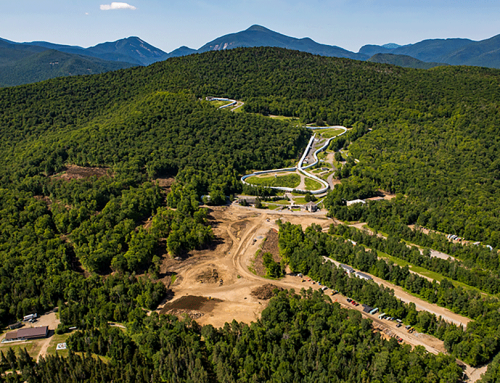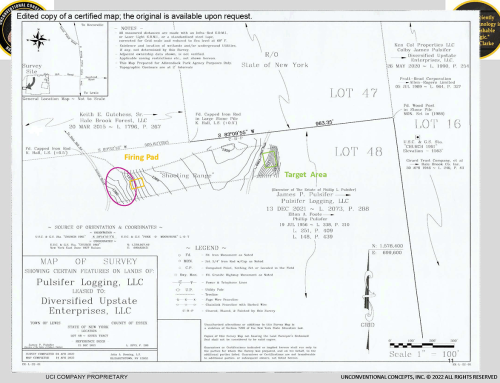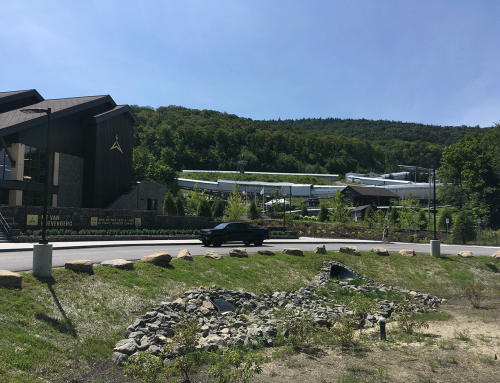The Essex Chain Lakes Complex contains newly purchased Forest Preserve around the Essex Chain Lakes, Hudson River, Pine Lake, and the Cedar River. This 12,000-acre area connects the Blue Mountain Wild Forest area with the Vanderwhacker Mountain Wild Forest. It’s a vast area of lakes, ponds, wetlands, rolling hills, small mountains and deep forests. The newly purchased lands are criss-crossed with logging roads, log landings, and small patch clearcuts. These new Forest Preserve acquisitions around the Essex Chain Lakes and Pine Lake create dynamic new recreational opportunities, yet pose a variety of management challenges.
The Department of Environmental Conservation (DEC) has started the process to create an official Unit Management Plan (UMP). They are taking public comments during a “scoping” process for ideas on how these lands should be managed.
Protect the Adirondacks has reviewed the scoping documents released by the DEC as well as an Interim Stewardship Plan for short-term management. Various private rights remain in place for hunting camps and clubs at several locations and club members will enjoy motor vehicle use rights for this period that are prohibited for the general public.
The DEC is taking public comments on this UMP until April 24, 2015. See more information at the DEC website.
Use the form at the bottom of this article to send an automatic email public comment to the DEC.
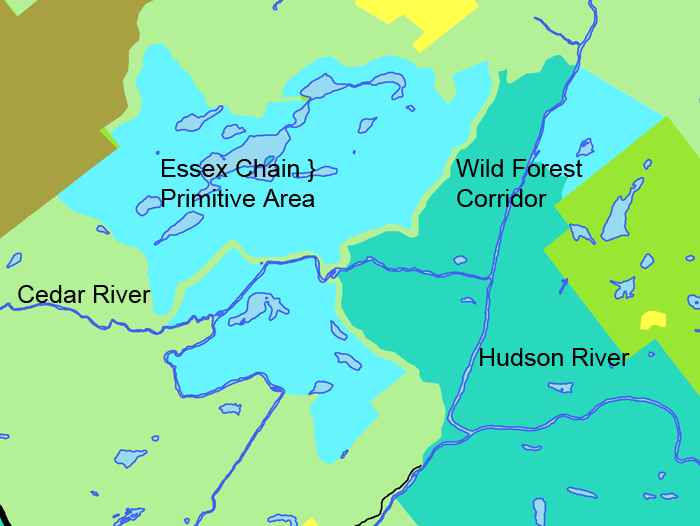
This map shows the Essex Chain Primitive area and surrounding Wild Forest and Wilderness areas. Note the Wild Forest corridor.
PROTECT has focused its comments on seven areas and we encourage public comments on these issues.
1. Essex Chain Complex plan should comply with the Wild, Scenic and Recreational Rivers Act and regulations, which prohibit a motor vehicle bridge over the Cedar River, prohibits retention of the Polaris Bridge for use by motor vehicles, and prohibits motor vehicles, such as float planes on Pine Lake or automobiles on the Chain Lake Road, within the .5-mile corridor of classified Scenic and Wild rivers.
PROTECT believes that all actions in a draft UMP should comply with the SLMP and other state laws and regulations, such as the Wild, Scenic and Recreational Rivers Act (Rivers Act). In such cases where the DEC is proposing action that requires changes to either the SLMP or other state laws, DEC should list these as options if laws are changed in the future. As the DEC moves ahead with planning for the Essex Chain Lakes Complex it is vital that the DEC comply with the SLMP and Rivers Act.
Troublesome issues include DEC’s aim to maintain the Chain Lakes Road South as a public motor vehicle route to a point north of the former Outer Gooley Club buildings violates the Rivers Act. For nearly one-half mile this road is within the Wild River corridor, which prohibits motor vehicle use and is supposed to be managed as Wilderness lands. This road should be closed and parking area to provide canoe access to the Hudson River built at a point outside outside the Wild Rivers corridor. The DEC claims that the DEC Commissioner can somehow make a determination that it can authorize public motor vehicle use in a Wild River corridor, but PROTECT finds no such authority granted in the law.
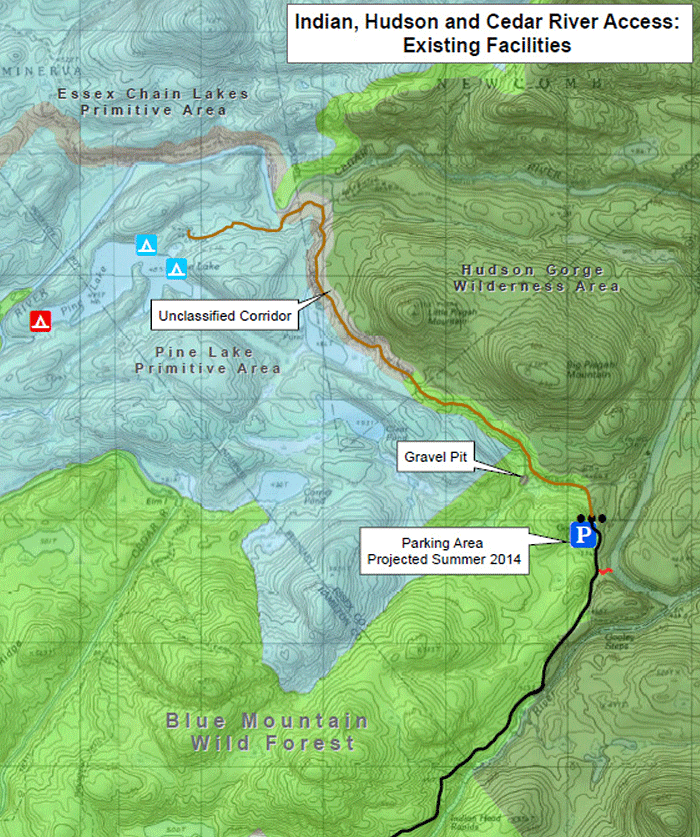
The DEC proposes to maintain a public motor vehicle road, and build a parking area, within the Wild River corridor, which violates the Wild, Scenic and Recreational Rivers Act. PROTECT calls upon the DEC to close the road and build the parking area at a point south, outside the Wild River corridor.
Another violation of the Rivers Act is the proposed construction of a new bridge over the Cedar River. The DEC and Adirondack Park Agency (APA) aim to build a new, long bridge over the Cedar River, but are not telling the public what this bridge would be used for. This bridge would be large and sturdy enough for motor vehicles as well as hikers, horses, and mountain bikers. Initial plans are of a size and scale to hold snowmobiles and groomers. Motor vehicle use on such a bridge would violate the Rivers Act. Moreover, DEC regulations for the Rivers Act define a trail as 4 feet in width. It’s important that this bridge comply with the Rivers Act, which means no motor vehicle use.
PROTECT also notes that when the DEC moved the proposed location of this bridge, it appears it was moved out of the Wild Forest corridor and into the Wilderness area.
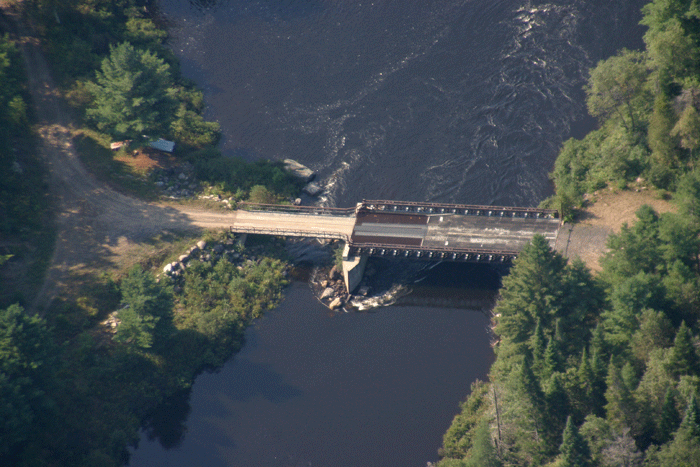
DEC proposes to keep the Polaris bridge. PROTECT believes this violates the Wild, Scenic and Recreational Rivers Act, DEC regulations, and the State Land Master Plan. This bridge should be removed and the river corridor restored, PROTECT supports canoe access/parking area to the Hudson River at the site of the bridge.
Two other areas where state planning violates the Rivers Act includes the plan to retain the Polaris Bridge over the Hudson River for motor vehicle use and allow for special floatplane-only camping sites on Pine Lake within the Scenic River corridor. It’s important that state planning comply with the Rivers Act.
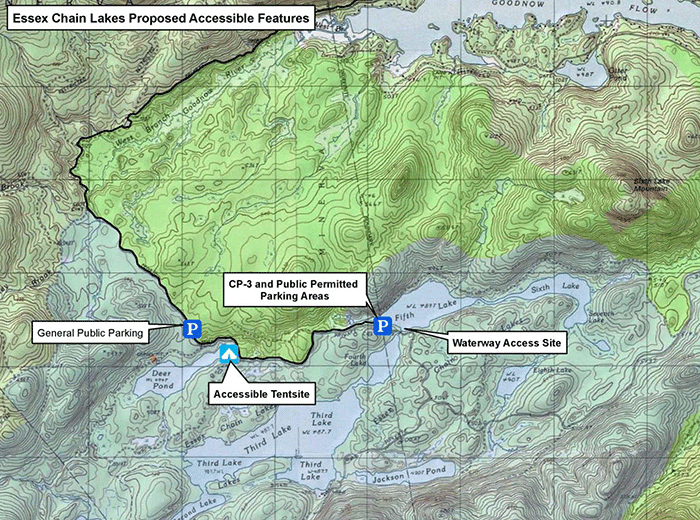
DEC proposes public access to the Essex Chain through Deer Pond and an extended permit-only drive-in access to Fifth Lake. PROTECT opposes the Fifth Lake access. PROTECT supports special access only for disabled individuals through the existing DEC CP-3 policy.
2. The Wild Forest corridor to 4th-5th Lakes on the Essex Chain violates the State Land Master Plan because it does not facilitate legal motor vehicle use. This road is an illegal peninsula into the Essex Chain Lakes Primitive area and DEC should abandon plans for motor vehicle access on this corridor.
PROTECT is troubled by DEC’s proposal to allow public use of this road and to build a new 4-car parking area for non-disabled people, which will be administered under a permit system to a point ¼ mile from the Fourth Lake-Fifth Lake culvert. This enhanced motor vehicle access to the Essex Chain is unnecessary and violates the spirit of a motorless Essex Chain Lakes area affirmed in the 2013 Forest Preserve lands classification hearing.
Motor vehicle use is sharply controlled under the SLMP and only allowed in Primitive Areas for administrative use or within 500 feet of the boundary. The creation of this Wild Forest corridor violated the SLMP.
All public access should be limited to the Deer Pond parking area, which should be the sole point of public access to the Essex Chain Lakes. We see no wisdom in a secondary, permit system for enhanced access by the general public. That creates a troubling and dangerous precedent for Forest Preserve management.
PROTECT also calls for the culvert, known as “the tube,” between Fourth and Fifth Lakes to be removed, as well as all fill from the road approaches on both sides and the channel restored. This will allow for the natural re-vegetation of that corridor as well as establishment of a navigable channel.
3. DEC’s plans for motor vehicle use within designated Wild and Scenic River corridors violates the Wild, Scenic and Recreational Rivers Act and violates long established management principles, practices, and precedents in long-standing Unit Management Plans.
State planning for other Unit Management Plans, such as the Blue Mountain Wild Forest UMP, clearly respect the boundaries of the Scenic River corridor and were assiduous in its planning to keep public motor vehicle use outside this corridor. State planning today seeks to overturn long established precedent for Forest Preserve planning by ignoring protections under the Rivers Act.
4. DEC’s plans to retain and utilize the Polaris bridge and build new multi-use snowmobile trails through the interior of the Vanderwhacker Mountain Wild Forest area violates the Snowmobile Trail Guidance and will likely necessitate an unconstitutional level of tree cutting.
A big issue is the DEC’s proposal to route new snowmobile trails through the heart of the Vanderwhacker Wild Forest area. PROTECT opposes the new trail west of Vanderwhacker Mountain. This area includes extensive wetlands and is a trailless, wild part of this unit. The snowmobile trail that connects to Hudson River and the Polaris Bridge violates the Rivers Act.
These trails will necessitate a great deal of tree cutting and be environmentally destructive. PROTECT opposes to creation of these trails. The retention of the Polaris bridge, in violation of the Rivers Act, will lead to even greater damage to the Forest Preserve from cutting of new trails through intact forest areas and the destruction of thousands of trees.
See a map below that shows these two proposed new trails.
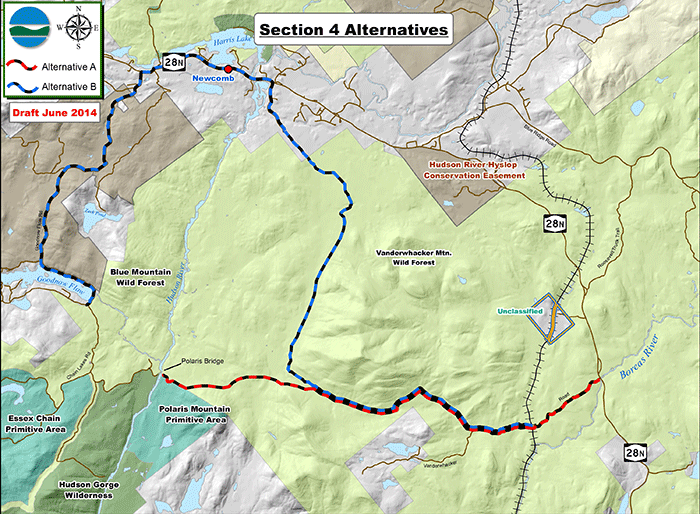
The DEC proposes two new snowmobile trails through wild areas in the central parts of the Vanderwhacker Wild Forest. These new routes will be used for snowmobiles in the winter and mountain biking in other seasons.
5. Plans for mountainbike use on roads in the Essex Chain Lakes Primitive area should be based on natural resource and market studies to determine feasibility, public interest, maintenance costs, and natural resource damage.
Primitive areas are those that possess Wilderness character, but contain some type of non-conforming use, such as a private road or power line, or it is too small to be a new Wilderness area, among other factors. The SLMP currently recommends that a great many Primitive areas should be upgraded to a Wilderness classification pending resolution of the non-conforming uses or further land acquisition. A few current Primitive areas will remain Primitive for the foreseeable future for a variety of reasons.
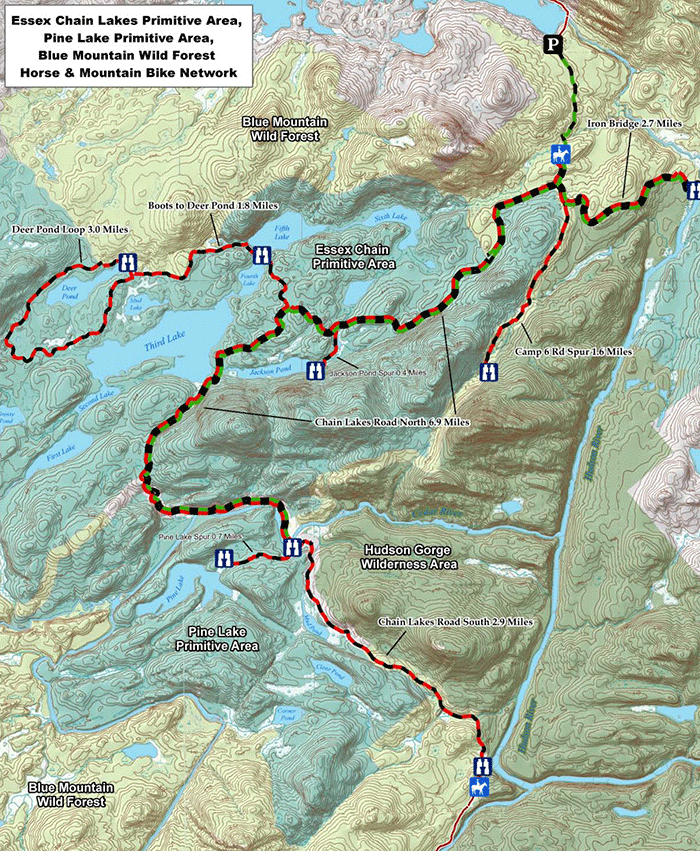
Should mountain biking be allowed on the former logging roads in the Essex Chain Lakes Primitive area?
The state is looking to deviate from long-established practice based on unsubstantiated public comments that there is a great recreational interest in mountainbiking on these former logging roads. The organized mountainbike groups have stated that they have little desire for mountainbiking trail systems on former logging roads. Desirable mountainbiking networks are based on single-track trails specially designed for biking. If there was a big public market for mountainbiking on former logging roads or dirt roads in general in the Adirondacks, why has mountainbiking not been a major activity in the Independence River Wild Forest, Black River Wild Forest, Moose River Plains Wild Forest (in the times outside the Black Fly Challenge race week), Ferris Lake Wild Forest, Watson’s East Triangle or Lake George Wild Forest areas? The market that exists for mountainbiking on dirt roads in the Essex Chain Lakes area is unproven and purely anecdotal, yet the APA is looking to make far-reaching changes to the Primitive area classification. Clearly research is needed.
6. The principle management objective for the Essex Chain Lakes area should be forest restoration and natural resource preservation. Retention of roads for recreational use will undermine these objectives.
The SLMP is founded on the principle that natural resource protection should be the paramount concern. The APA and DEC are trying to rollback protections for the Forest Preserve and make recreational use, e specially motor vehicle use and access, the top considerations.
7. Required studies, analyses and inventories must be completed
The draft Unit Management Plan (UMP) for the Essex Chain Complex must include many of the standard analyses and inventories of natural resources, lists of areas in need of rehabilitation, assessments of public uses, among other required information enumerated in the SLMP’s “Unit Management Plan Development” section. Recently approved UMPs, such as those of the Hurricane Mountain and St. Regis Mountain historic areas, saw the DEC develop a standard set of information and appendices that should be included in this UMP as well. This information is vital to sound planning for public recreation and natural resource protection.
Write a Public Comment Today to the Department of Environmental Conservation
Letters must be received at the DEC office by April 24, 2015:
Josh Clague, Natural Resources Planner
625 Broadway, 5th Floor
Albany, NY 12233-4254
Email: adirondackpark@dec.ny.gov
Thank you for taking a stand in defense of the Forest Preserve.
Or, use the form bellow to send an automatic email public comment.
Error: Contact form not found.



